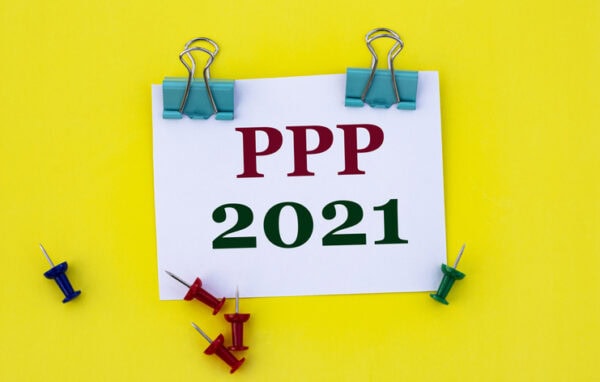By Jason Myers of BKD
 The last year has been challenging, and it appears those challenges are continuing into 2021—at least for a while. Over the past year Congress has passed multiple stimulus bills to help the struggling economy. The 2021 Consolidated Appropriations Act (CAA) was one of those bills, and it contained many new stimulus provisions as well as revised, modified, and extended other provisions that were passed as part of earlier bills. The focus of this article is to provide explanations of significant CAA provisions.
The last year has been challenging, and it appears those challenges are continuing into 2021—at least for a while. Over the past year Congress has passed multiple stimulus bills to help the struggling economy. The 2021 Consolidated Appropriations Act (CAA) was one of those bills, and it contained many new stimulus provisions as well as revised, modified, and extended other provisions that were passed as part of earlier bills. The focus of this article is to provide explanations of significant CAA provisions.
Expenses Paid with PPP Funds Now Deductible for Federal Income Tax Purposes
Because the Paycheck Protection Program (PPP) was included as part of the Coronavirus Aid, Relief, and Economic Security Act (CARES Act), organizations have questioned the ability to deduct expenses paid with PPP funds; and after IRS Notice 2020-32 was issued, these expenses were considered nondeductible. This has been a highly debated topic, and it was resolved for a final time by the CAA. Section 276 of the COVID-Related Tax Relief Act of 2020, a sub-bill of the CAA, which made expenses paid with proceeds received from a PPP loan deductible for federal income tax purposes. When Congress passed the PPP as part of the CARES Act, it specifically made the forgiveness of the PPP loan tax exempt. The issuance of Notice 2020-32 effectively made the PPP loan forgiveness taxable even though that wasn’t viewed to be Congress’ intent. In addition to making the expenses deductible, the provision allows the tax-exempt income related to PPP loan forgiveness to increase the basis of a pass-through entity (LLCs, partnerships, and S corporations) owner’s units or stock in the entity.
First and Second PPP Draw Loans
The CAA also extended the original PPP. Businesses that didn’t take advantage of the first round of PPP (or returned all or a portion of their loan or borrowed less than the maximum that could have been borrowed) were allowed to apply through March 31, 2021, for a PPP first draw loan (PPP 1). In addition, the CAA provided for a second draw PPP loan (PPP 2). The rules and process to apply for and receive a PPP 2 loan are similar to those followed for the PPP 1. There are, however, a few differences.
First among these differences, to qualify for a PPP 2 loan, a business must show a 25 percent drop in gross receipts during any one quarter of 2020 as compared to the same calendar quarter of 2019. Gross receipts are determined using the method of accounting the business uses for income tax purposes and generally are gross receipts that would be reported on the business’s income tax return. A qualification that changed for PPP 2 loans from the PPP 1 loan requirement was the employee threshold. The employee threshold for PPP 2 loans is 300 or fewer employees, while the PPP 1 employee threshold was 500 employees. The employee limitation is based on either calendar-year 2020 or 2019 average headcount per pay date. Headcount includes all full-time, part-time, and temporary employees.
The effect on a contractor’s financial statements will vary, and understanding the reporting ramifications will be different for each contractor and its specific situation. One key aspect is how the PPP loan should be presented on the classified balance sheet when the entity is expecting forgiveness. There are options depending on if the company treats the funds as a loan under Accounting Standards Codification (ASC) 470 or as a grant under International Accounting Standards (IAS) 20, which requires the contractor to make an accounting policy election.
Options on How PPP Loans Should Be Presented on a Balance Sheet When Expecting Forgiveness
Under ASC 470
The first two options require the entity to evaluate the amount that’s expected to be forgiven separately from the amount that’s not expected to be forgiven.
- For the portion of the loan that is expected to be forgiven, the entity should make a policy election to classify the amount as either (a) long-term or (b) current, assuming the entity expects the formal forgiveness notice to be received within the next year.
- For the portion of the loan that is not expected to be forgiven, the entity should classify that amount according to the repayment terms of the agreement, which could result in part of the amount being presented as current and the remaining amount presented as noncurrent.
- The third option is for the entity to present the legally outstanding loan amount based on the agreement’s contractual terms. For example, if the terms of the contract required no principal payment within the next year, then the presentation would be all noncurrent.
It should be noted that, because the extension of the deferral period under the Paycheck Protection Program Flexibility Act of 2020 automatically applies to all PPP loans, entities should use these extended terms when evaluating the loan’s repayment terms.
Under any of the three options, the proceeds from the loan would remain recorded as a liability until the loan is, in part or wholly, forgiven and the debtor has been “legally released.” Once the loan is, in part or wholly, forgiven and legal release is received, an entity would reduce the liability by the amount forgiven and record a gain on extinguishment. The gain would be reported in nonoperating income and not be reported net of expenses incurred for the loan.
Under IAS 20
The entity is effectively treating the money received under the PPP program as a grant and recording the amount received as a deferred income liability until it is deemed probable the grant program criteria have been met and the assistance will be received. Therefore, if the entity has determined it’s probable the program criteria have been met for the full amount of the loan, then the entire amount of deferred income would be recognized as either “other income” or a reduction of the related expenses. No liability for the PPP proceeds would remain on the balance sheet in this instance–unless the covered period extended past the end of the current fiscal year (202X). If the covered period extends past the end of the current fiscal year, then as of the end of the current year, the entity would continue to present a deferred income balance related to the 202X portion of the covered period.
However, if the entity only expects to receive partial forgiveness, then the remaining amount that’s not expected to be forgiven should be treated as debt that must be repaid. The company would reclassify the amount from deferred income to debt, with the current/noncurrent presentation being based on the repayment terms.
Refundable Tax Credit Against Certain Employment Taxes
The CAA also significantly modified the Employee Retention Credit (ERC). The ERC, a refundable tax credit against certain employment taxes, was established by the CARES Act. Here are several significant changes made to the ERC by the CAA:
- PPP loan recipients are now eligible to claim the credit in 2020 and 2021 to the extent those organizations meet ERC qualifications. The credit is only eligible for qualified wages not included in the PPP loan forgiveness calculation. Under prior law, PPP loan recipients weren’t eligible to claim the credit.
- The credit period was extended to wages paid before July 1, 2021.
- The maximum refundable credit amount for 2021 increased from 50 percent to 70 percent of qualifying wages for each employee. In addition, the maximum qualifying wage in 2021 for each employee increased from $10,000 per year to $10,000 per quarter.
- For 2021 credits, the required decline in gross receipts was reduced from at least 50 percent to at least 20 percent.
- For 2021, the 100-employee threshold is increased to 500 employees.
- Under the CARES Act, federal, state, and local governmental employers or agencies and instrumentalities thereof weren’t eligible for the credit. For credits in 2021, the CAA expands the eligibility to include public colleges or universities, organizations whose principal purpose or function is providing medical or hospital care, and organizations described in Internal Revenue Code (IRC) § 501(c)(1) and exempt from tax under IRC § 501(a).
 Jason A. Myers is a member of the National Construction & Real Estate Group of the national CPA advisory firm, BKD (www.bkd.com). He is also the East Region team leader of the firm. He has more than 19 years of experience providing assurance, accounting, and consulting services to both public and private companies. Myers was named the 2016 Emerging Growth Leader of BKD’s Construction and Real Estate Group. In June 2021 he will begin serving on the NASBP CPA Advisory Council. He can be reached at jmyers@bkd.com or 317.383.4000.
Jason A. Myers is a member of the National Construction & Real Estate Group of the national CPA advisory firm, BKD (www.bkd.com). He is also the East Region team leader of the firm. He has more than 19 years of experience providing assurance, accounting, and consulting services to both public and private companies. Myers was named the 2016 Emerging Growth Leader of BKD’s Construction and Real Estate Group. In June 2021 he will begin serving on the NASBP CPA Advisory Council. He can be reached at jmyers@bkd.com or 317.383.4000.
Get Important Surety Industry News & Info
Keep up with the latest industry news and NASBP programs, events, and activities by subscribing to NASBP Smartbrief.




